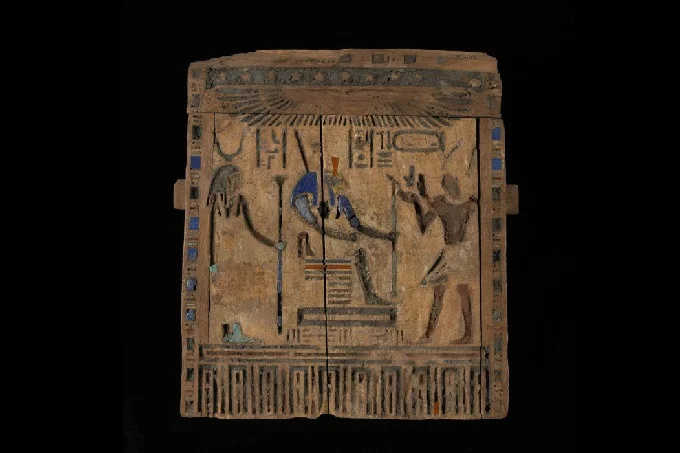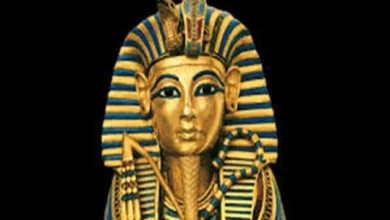How Pharaohs shared power in the Late Period and what is known about last ruler of ancient Egypt

The Late Period is the name given to the last era of the indigenous ancient Egyptian rulers from 664 BC to the campaigns of Alexander the Great in 332 BC. For Egypt, it was when it was true, the last kings of the Ptolemaic family ruled.
In the time, it began to lose its independence, increasingly becoming a satrapy of other, larger empires. Read more about the late Egyptian period of the pharaohs in the article.
26 Dynasty: Sais period
The Twenty-sixth Dynasty is somewhat of a mystery when it comes to attributing it to a particular period. Some historians place it at the end of the Third Intermediate Period, while others place it in the Late Period. Be that as it may, at this point, Assyria seized power in Ancient Egypt and used several local loyalists on the throne as vassal princes, namely Psamtik I (Psammetichus I) of Sais.
Their conquest of Egypt led to many problems closer to home. While they were busy suppressing these uprisings, Psamtik was given enough space to assert his independence and return the lands of Egypt to the rule of the Saite dynasty. Perhaps even more impressive, the Psamtik was able to regain control of Egypt without using excessive force.
When he conquered Thebes, he retained influential pro-Kushite positions, such as that of Amun’s wife. The Consort of Amun held a position reserved for royal women and was a high-ranking priestess of the cult of Amun, an extremely important religious group centered in Thebes.
The name was based on the myth of the divine birth of the king, according to which his mother was impregnated by the god Amun. The original title was first attested in the Middle Kingdom, but the full designation was only realized during and after the Eighteenth Dynasty. The rulers of the New Kingdom were the ones who successfully drove out the Hyksos, the main foreign rulers of Egypt during the Second Intermediate Period. Since Thebes was their capital, and Amon was the local patron deity, the ancient Egyptians believed Amon led them to victory. Thus,
This position was essentially used as a political tool to ensure royal power over Thebes and the priesthood of Amon. It reached its influential height at the end of the Third Intermediate Period/beginning of the Late Period, as evidenced by the tomb of Amenirdis I at Medinet Habu. This position lasted until 525 BC, when the Persian Empire overthrew the last ruler of Egypt, Sait Psamtik III, and enslaved his daughter, who was next in line for the position. Thereafter, the powerful position of Spouse of the god Amon disappeared from the historical record.
27 Dynasty: Achaemenid Empire
The Persian rulers adopted the traditional title of Pharaoh, but they ruled as foreigners, unlike the Libyans and Nubians, who adopted many of the local customs and mixed them with their own. The Persians ruled through a position called satrap, the ancient equivalent of a governor.
The Egyptian satrapy was, in fact, a province of the Achaemenid empire between 525 and 404 BC and was founded by Cambyses II after the Battle of Pelusia, the first major conflict between Persia and Egypt. It was fought near Pelusia on the eastern side of the Delta in 525 BC. According to Herodotus, the key reason for this war was a personal conflict between Ahmose II of Egypt and Cambyses II of Persia.
Cambyses asked Ahmose for a doctor, and he agreed. The doctor was extremely unhappy with the fact that he was forced to leave his home to take on additional work, so he took revenge by persuading Kambiz to ask Ahmose to marry his daughter. Ahmose did not want to give up any of his daughters, but he also did not want to start a conflict with Cambyses, so he sent an Egyptian named Nyetis.
She did not feel loyalty to Ahmose because he allegedly executed her father, the previous king of Egypt, and she told Cambyses the truth about the treachery of Ahmose. Enraged, Cambyses vowed to avenge this grievous insult. He sent a message to the King of Arabia, a famous enemy of Ahmose II, and secured a safe passage through Gaza to Pelusium.
Ahmose II died about six months before Cambyses entered Egypt. Psamtik III, his son and the last king of the twenty-sixth dynasty of Late Egypt gathered his army and marched against the Persian army and their allies.
Unfortunately, Psamtik did not have much military experience, and none of his allies came to the rescue. The battle was short and decisive. Egyptian forces retreated en masse to Memphis. More blood was spilt, mostly Egyptian, until the Egyptians surrendered. The Psamtik was captured after the fall of Memphis and was allowed to live under the rule of the Persians.
Shortly thereafter, he attempted an uprising against the Persians, failed, and committed suicide. Egypt became the last province to become a Persian satrapy, along with Cyprus and Phenicia.
Under Cambyses, many ancient Egyptian traditions were weakened or completely closed, and he ordered to limit the resources allocated to almost all Egyptian temples. When Darius I came to power, he spent a lot of time suppressing uprisings in various parts of his empire. However, unlike Cambyses, Darius actually respected Egyptian religious beliefs and internal affairs, earning the respect of the locals.
Among other achievements, he completed the construction of the canal system in the Suez, which made it faster and easier to get from Great Bitter Lake to the Red Sea. Darius eventually used this channel to import skilled Egyptian workers for construction projects in Persia. Unfortunately, this led to an overall decline in the quality of art and architecture in Egypt at this time.
However, Darius’ construction of temples and public works in Ancient Egypt did indeed benefit the economy, as did his legal reform and strengthening of the irrigation system. The Egyptians treated Darius well as a ruler, which certainly could not be said of most of the Persian rulers of the Late Period.
Xerxes I “the Great” was one such example. His outlook and politics were in many ways similar to those of Cambyses. By appointing his brother as governor, Xerxes effectively ended the privileged status of Egypt under his predecessor. He also increased exports from the country, diminished the focus on Egyptian gods, and stopped building monuments altogether. Xerxes was killed in 465 BC by another Persian politician, which led to several internal conflicts. Eventually, Artaxerxes I, the third son of Xerxes, was crowned the next Pharaoh.
Five years after his accession to the throne, another Egyptian uprising was led by a Libyan leader named Inaros II, the son of the Egyptian prince/ruler Psamtik IV. With the help of the Athenian army, he recaptured Memphis and took control of most of Egypt.
He was ultimately defeated by a Persian general and was later executed by Artaxerxes. After he died in 424 BC, there was a short struggle for the throne, culminating in the rise of Darius II to power in 423 BC, and reign until 404 BC.
Towards the end of his reign, there was another round of uprisings in Egypt led by Psamtik V. None of the Persian successors could suppress them, which allowed Egypt to strengthen its independence.
28 Dynasty
The twenty-eighth dynasty of Late Egypt was short-lived, lasting only from 404 to 398 BC, and included only one Pharaoh, Amenirdis II, also known as Psamtik V. As already mentioned, he led a rebellion against the Persian king Darius II in the last years of his reign with the help of Greek mercenaries. After the death of Darius in 404 BC.
The Psamtik declared himself the rightful Pharaoh of Ancient Egypt. He ruled until 398 BC, when Nefaarud I was overthrown and destroyed, which led to the establishment of the twenty-ninth dynasty of the Late Period of Egypt.
29 Dynasty
Nefaarud I, perhaps better known by his Hellenized name Nepherites I, was the founder of the twenty-ninth dynasty. He came from Mendes, a city in the northeastern Delta. To fight off the continuous Persian offensive, he made alliances with Sparta and various Greek mercenaries. His successor, Psammutis, ruled for only one year before he was overthrown by Hakor, the supposed grandson of Neferit I.
He ruled for thirteen years – more than half of the dynasty’s existence. During this time, he built many buildings and restored monuments to his royal predecessors, such as the chapel for the sacred barque of Amun-Ra at Karnak, which was started by Neferith I or Psammutis, and the Temple of Hibis in the Kharga oasis.
Akhoris also managed to successfully fight off the Persians thanks to agreements with Athens and Cyprus. After he died in 380 BC, his son and heir Neferit II became king, but he could not stay on the throne.
30 Dynasty
Lasted from 380 to 343 BC, it was the last local dynasty of Egypt of the Late Period and ancient Egypt as a whole. Nectaneb I overthrew Neferites II in 380 BC. He gained control over all of Egypt but spent most of his reign defending his kingdom from the Achaemenids.
Nectaneb decided to rule with his son Tahos and did so until his death in 363 BC. Tahos began to invade Persian territories in present-day Syria and Israel before being driven back by his brother Tjahepimu. He took advantage of the rather unpopular position of Tahos among the Egyptian people and placed his own son Nectanebus II on the throne. The Egyptian army also decided to show loyalty to Nectanebu II, forcing Tahos to flee the country. Interestingly, he ended up at the court of the Persian king.
Like his namesake, the reign of Nectanebus II was largely devoted to the cessation of the activities of the Persians led by Artaxerxes III. Nectanebus was able to contain Artaxerxes during the first ten years of his reign and then again when the Persian king tried to invade Egypt around 350 BC.
His failure to take over the kingdom sparked a series of revolts in the satrapies of Cyprus, Phenicia, and Cilicia. Eventually, Artaxerxes was able to suppress these uprisings and attacked Egypt a second time in 343 BC. This time he succeeded, forcing Nectaneb to retreat from the Delta to Memphis. As soon as he realized that he had lost control, the Egyptian king fled to Nubia. His defeat marked the end of Egypt as an independent state.
31 Dynasty
After defeating Nectanebus II, Artaxerxes III crowned himself Pharaoh and made major changes in his “conquered satrapy”. He destroyed the city walls, ransacked all Egyptian temples, stole important religious texts and persecuted believers, and raised taxes on Egyptian citizens to the point where they may never be able to rebel against the Persians again.
The order of government after Artaxerxes III is rather vague, but a few notable names remain. Darius III rose to prominence under the leadership of Artaxerxes III. After killing the king with poison and a series of subsequent poisoning of his successors, Darius ascended the throne around 336 BC, shortly after Alexander the Great began his conquest of the Persian Empire.
Before capturing their capital and surrounding territories, Alexander went to Egypt. In 332 BC, he drove out the Persians and established his own rule in the area. With this step, the Late Period ended, and with it came the end of the primordial Egyptian reign.




